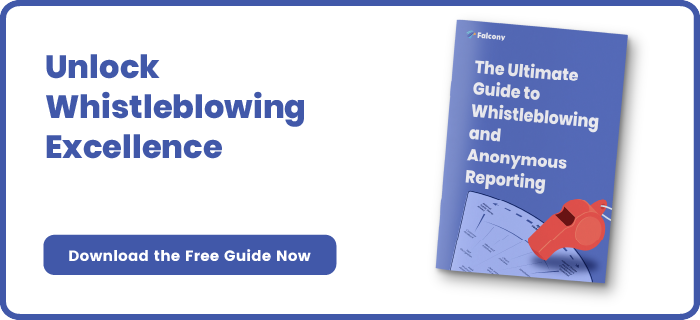3 Reasons Why To Categorise Whistleblowing Cases
When it comes to whistleblowing, case management can make all the difference. If the management is effective and follows the right practice, people will feel more inclined to report the information they have. Not to mention the requirements set in laws like the EU Whistleblowing Directive.
There is one aspect of whistleblowing case management that is not widely mentioned but actually sets a frame for the whole process: categorisation. Here are our three reasons why you should implement it at the core of your whistleblowing process. To give you a better idea of the different categories that link to whistleblowing, you will also find a list of example categories in the end.
1. Ensure that relevant questions are asked
Although every whistleblowing case is different, there are certain guidelines we can set based on their nature. As an example, the questions you are looking to get answered will vary a lot between a case including harassment compared to an environmental issue. This means that there should be a different set of questions available for whistleblowers to answer based on the nature of their information.
Leading whistleblowing platforms take this into account by providing organisations the ability to create categories that have their unique set of questions and instructions on the platform. Although detailed whistleblowing policies have their place in the mix, providing stakeholders information in this kind of low-threshold format will help to streamline the process.
2. Ensure that cases are delivered to the right people
Especially in larger organisations, the team dealing with whistleblowing cases can include people with different roles and even have participants outside the organisation. This means that there is a possibility of creating information overflow by engaging people who don't have input for a specific case. Categorisation assists organisations to detect who should be the first to know when a new whistleblowing case is reported.
Let's use the same example categories we had before. Having different categories for harassment and environmental issues makes it possible to direct this type of cases to different people. Not only that, the categories can also have different follow-up questions to make sure that all actions have been taken before delivering an answer for the reporter.
3. Ensure responsiveness
Keeping whistleblowers informed about their cases, and managing them according to best practices is essential in creating a culture where people are willing to take action. Furthermore, being responsive is also a key part of the EU directive: in order to stay compliant, organisations need to inform the whistleblower within seven days that their case has been received and is under investigation.
Of course, categorising whistleblowing cases itself is not going to make the process more effective if the response to the cases is subpar. But if you use it to your advantage by making sure that the information about the cases is always shared with the right people with relevant information, you are cutting time spent on communicating the tasks internally and therefore making it more likely that the reporter receives a comprehensive reply in a more swift manner.
Example Categories Of Whistleblowing
To give you a better idea of the different categories of whistleblowing, here are some of the most common ones:
- Tax Frauds
- Accounting Frauds
- Government Contract Fraud
- False claims (e.g. healthcare and pharmaceuticals)
- Health and safety violations
- Unethical products
- Harassment and discrimination
- Corruption & Bribery
- Forced Labour / Child labour
- Environmental violations
- Workplace retaliation (reducing pay, illegal termination etc)
- Violation of freedom of association
- Unreported employment
- Human trafficking
- Quarantine Violations (e.g. COVID-19)
Final Thoughts
Categorising cases based on their nature is an important part of improving whistleblowing case management. It helps organisations to guide their stakeholders when reporting, make sure that the information is always delivered to right people and enhance responsiveness of their whistleblowing process.
If you're looking to implement a whistleblowing platform with different categories, we've got you covered. Falcony | Observe is easy-to-use, fast to set up, ensures 100% anonymity for whistleblowers, boosts two-way anonymous communication, has customisable workflows, vast integration possibilities and more. Contact us for more information.
We are building the world's first operational involvement platform. Our mission is to make the process of finding, sharing, fixing and learning from issues and observations as easy as thinking about them and as rewarding as being remembered for them.
By doing this, we are making work more meaningful for all parties involved.
More information at falcony.io.

Related posts
6 Noteworthy Whistleblowing Cases in Aviation and Aerospace
Whistleblowing plays a crucial role in uncovering misconduct, safety violations, and unethical...
8 Universal Whistleblowing Cases in Farming Industry
Workers who speak up about wrongdoings often face challenges and risks, but their actions...
6 Typical Whistleblowing Cases in Facilities Maintenance and Cleaning
Facilities maintenance and cleaning are essential for maintaining safe, healthy, and functional...




